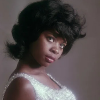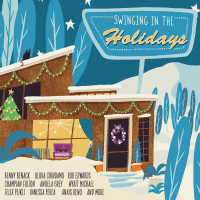Home » Jazz Musicians » Johnny Adams
Johnny Adams
“The Tan Canary” The Big Easy has spawned more than its fair share of musical offspring. But just being a native son does not guarantee success. One has to earn it. There are many who vocalize in R&B and blues, but not too many real soul singers. They have a tendency to get weeded out real quick. Johnny Adams was a long-time regular on the New Orleans music scene, beginning with his 1959 rhythm and blues hit "I Won't Cry." Adams, whose velvety voice could stretch into a high falsetto with ease, mastered a handful of musical styles, including gospel, blues, soul, jazz, and country. Over his nearly 40-year career, he recorded in these varied genres on a number of labels, yet he never reached the national stardom of some of his contemporaries. He performed largely in New Orleans, where he became a local legend. The eldest in a family of ten children, Adams was born on January 5, 1932, in New Orleans, Louisiana. He was raised in a religious family and sang in the church choir, so it is not surprising that he was first drawn to gospel music. At age 15, Adams left school, got a day job, and began performing at night with the Soul Revivers, a gospel quartet. With this quartet, he honed what was to become his signature style of vocal acrobatics, ranging deftly from low to high notes. From that group he signed on with Spirit of New Orleans, and with Bessie Griffin and the Consolators. Yet Adams's virtuoso voice stood out from the ensemble. In 1959 he jumped onto the rhythm-and-blues charts with a single, "I Won't Cry," produced by Mac Rebennack on the Ric record label. The ballad became one of Adams's most memorable songs. Although it might have been the first step on his road to stardom, the song did not catapult Adams into the national spotlight. Ric label owner Joe Ruffino held up national distribution of the singles, and Adams claimed that Ruffino held him back. "I really believe I could have gone somewhere if Ruffino would have just co-operated with the major record companies." Still, Adams continued to record with Ric, gaining national attention with "A Losing Battle," written by Rebenack, which made the rhythm and blues charts in 1962. After Ruffino's death in 1963, Adams was free to forge his own path. He toured the "sugarcane circuit" of local bars and clubs, where he earned a solid reputation and a loyal fan base.
Read moreTags
Johnny Adams: There is Always One More Time

by Ed Kopp
The late Johnny Adams sang with as much soul as Bobby “Blue" Bland and as much cool sophistication as Nat King Cole. Unfortunately the New Orleans native never achieved the same level of fame as either of those great artists. Adams scored a couple of regional soul hits in his younger days ("I Won't Cry," “Reconsider Me") but didn't realize his full potential until he hooked up with Rounder Records producer Scott Billington in 1983. This CD is an overview ...
Continue ReadingJazz Musician of the Day: Johnny Adams

Source:
Michael Ricci
All About Jazz is celebrating Johnny Adams' birthday today!
JAZZ MUSICIAN OF THE DAY Johnny Adams
Johnny Adams - vocalist recording artist, (1932-1998) “The Tan Canary” The Big Easy has spawned more than its fair share of musical offspring. But just being a native son does not guarantee success. One has to earn it... more
Website | Videos | Articles
Join Johnny Adams' fan network
Put AAJ's Musician of the ...
read more






























